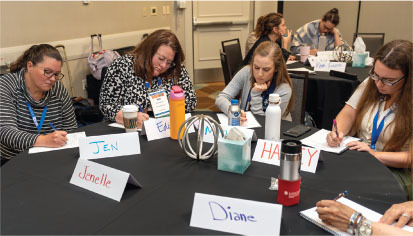September/October 2018
Leading Insight
Is Your Firm Maximizing Its Leadership Programs?
Top leadership in AEC firms know that it’s wise to invest in young and midcareer professionals and maximize their leadership potential. But what can make an organization’s leadership development program more effective? A new survey offers insights on how firm executives are developing their next generation of leaders and how to fill in the gaps to improve programs.
High-performing organizations are placing a greater priority on strengthening their leadership bench with fresh talent, according to management consulting company Wilson Learning. The bulk of employees receiving the development are middle managers, supervisors, and individuals identified as “high potential.” The highest-priority leadership skills are communications, team leadership, strategy development and alignment, interpersonal skills, and motivating others. These skills are being honed primarily through instructor-led courses, on-the-job training, and manager coaching and support.
Companies have increased the number of employees that are participating in development training and programs, but they are finding that it’s taking longer to bring new leaders to high levels of proficiency. More than 30% of survey participants say that it takes 13–18 months for employees to reach a satisfactory level. Companies spent $1.9 million on leadership development for 2018 compared to $1.3 million in 2017. The survey advises organizations to expand their definition of effective leadership and take the following actions to improve development efforts:
Focus on effectiveness. Focus less on making learning less expensive and time-consuming and more on whether the leadership development effort is creating better leaders.
Get executives engaged. Senior executives need to see leadership development as a priority. They need to communicate specific expectations, model desired behavior, and engage directly in leadership development activities.
Quickly create proficient leaders. Key performance indicators should be how quickly proficient leaders can be created, not how quickly the firm can get leaders in and out of a program. Supporting new leaders in their transition is key. Adapt learning methods. Newer generations are exposed to much more diverse and integrated learning approaches than were prior generations. Make use of this experience and expand leadership development from an event to a journey. Engage all generations. Develop the current generation of leaders into effective coaches and mentors.
Pay attention to social media trends. There is no question that the growth of social media is affecting leadership behavior, for the positive and negative. But it’s not clear how. It would be wise to engage leaders in discussions about the potential benefits and risks of social media. Forty-eight percent of organizations say that social media (Facebook, Twitter, LinkedIn, etc.) has made leadership both easier and more difficult, while 28% say neither easier nor more difficult.


 Volunteering at NSPE is a great opportunity to grow your professional network and connect with other leaders in the field.
Volunteering at NSPE is a great opportunity to grow your professional network and connect with other leaders in the field. The National Society of Professional Engineers (NSPE) encourages you to explore the resources to cast your vote on election day:
The National Society of Professional Engineers (NSPE) encourages you to explore the resources to cast your vote on election day:




